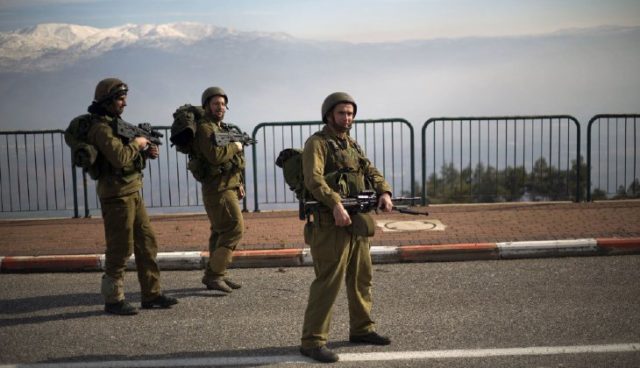
Israel last month marked the 10th anniversary of the first Hezbollah war. Newspapers and television featured analysts noting a decade of quiet along the Israeli-Lebanese border. Nevertheless, most spoke of the next war with Hezbollah in terms of “if, not when.” It would, they forecast, impose a shocking toll on both countries, particularly civilians.
In 2006, Hezbollah (the Iranian-backed, Lebanese Shi’ite “Party of God”) mobilized an estimated 10,000 full and part-time gunmen, and 10,000 to 15,000 rockets. It fired more than 4,000 of them into northern Israel, a rate of 100-plus per day. Several hundred thousand Israelis, my sister and brother-in-law among them, either spent much of the time at home in reinforced “safe rooms” (required after Iraqi dictator Saddam Hussein’s 1991 missile attacks) or fled southward.
The war ended with the adoption of U.N. Security Council resolution 1701, requiring, among other things, Hezbollah’s disarmament. A 2004 Security Council resolution, 1559, had called for the same thing. Both were, unsurprisingly, ignored.
Today Israeli sources say Hezbollah possesses — thanks to Iranian shipments, often via Syria — as many as 150,000 rockets and missiles. These include longer range projectiles with greater accuracy and more destructive warheads, able to strike anywhere in the Jewish state. That’s not like saying “anywhere in the United States.” Israel’s the size of New Jersey, with most of its Jewish population living in the northern half, the bulk of it squeezed into a strip from Jerusalem to Tel Aviv to Haifa running barely 100 miles long and rarely more than 12 miles wide.
Hezbollah’s 10,000-troop strength of 2006 is now put at 40,000 by some, though others doubt that estimate. The movement’s lost hundreds of men fighting for Bashar Assad’s regime (and Iran and Russia indirectly) in Syria’s civil wars. But experts say Hezbollah’s also gained invaluable battlefield experience — including that necessary to seize and hold, if temporarily, Israeli territory. And it’s been rearmed with advanced weaponry.
Regardless, daily life in Israel continued and often pleasantly on the 10th anniversary of the ’06 combat. Expansion of the country’s rail network — sort of an inter-city Metro absent Washington’s chronic maintenance problems — presses on and will include a high-speed Jerusalem-Tel Aviv link. Construction cranes continue to loom in urban areas, though new housing doesn’t meet demand and high prices pressure young people and middle-class families.
New restaurants and cafes pop up, and Israel reportedly offers more vegan dining choices per capita than any other country. The Israeli Philharmonic Orchestra, Zubin Mehta still energetically conducting, performs 80th anniversary concerts (older than the state, it was once the Palestine Philharmonic). Israeli high-tech blossoms, one recent innovation said to allow airplane pilots at last to be able to see through fog.
Still, on a stroll through Jerusalem’s Bloomfield Park, near the Old City’s Ottoman-era walls, one can look east across the hills and see a concrete portion of the security barrier gashing the landscape between the Silwan (biblical Shiloach) neighborhood and a Palestinian village beyond. Roughly 100,000 West Bank Arabs have permits to work in Israel daily. But they must be screened for the would-be throat-slashers and suicide bombers idolized as “martyrs” by the Palestinian Authority.
At Jerusalem’s Museum of Islamic Art, a French film-maker shows a documentary on both young Iranian artists, ostensibly if not scrupulously apolitical after the brutal suppression of the 2009 “Green Revolution,” and practitioners of an old Persian combination of body-building and mysticism. Some of them apparently belong to the basij, the pro-regime militia that helped crush 2009’s anti-ayatollahs movement.
With the misplaced certainty not uncommon among intellectuals, the filmmaker implies Israelis “used to” consider Iran their enemy, before the West’s 2015 nuclear deal with Tehran. Previous President Mahmoud Ahmadinejad’s anti-Zionist, antisemitic threats were mostly bombast, he suggests, heedless of their reiteration by current Iranian leaders.
Somehow, even after the massacres at Charlie Hebdo and a kosher market, the slaughter at the Bataclan music hall, after a Muslim mental case murdered scores with his truck and jihadis butchered a priest on his altar, things must look different from France. From Jerusalem one notes that when 40 French-Muslim leaders and intellectuals called, after the truck murders, for Muslim-Christian harmony, they conspicuously omitted Jews.
Just south of the Old City walls one can tour “the Large Stone Structure,” which archaeologist Eilat Mazur identifies as King David’s palace. In the constricted yet thriving Jewish state — threatened with oblivion by neighbors near and far, neighbors cheered on American college campuses and social media — history and the future touch. Israel’s ability to stand between the West and a general Holocaust will define, as longshoreman-turned-

